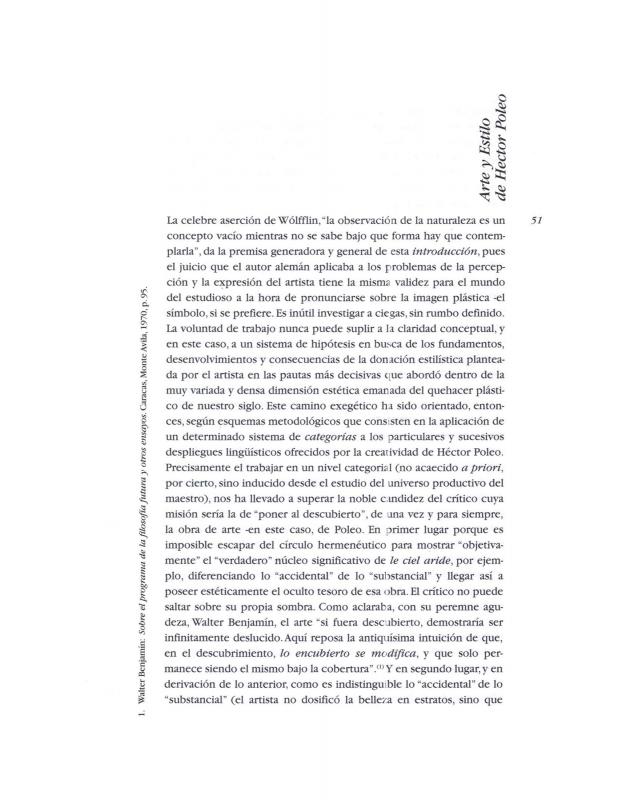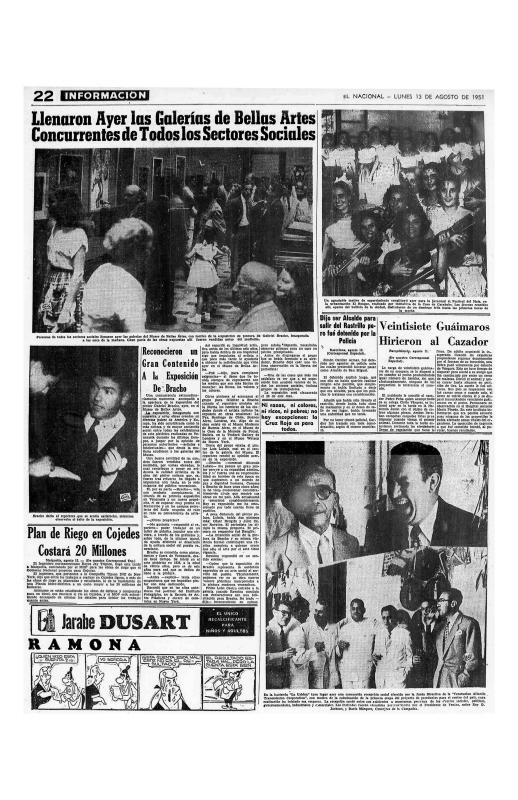While in Caracas, Enrique Buenaventura (1925–2003), the Colombian playwright and theater director had the opportunity to see Gabriel Bracho’s (1915–1995) exhibition, and offered a critical review of it. In his text, he moves between an analysis of form, which raises doubts about the artist’s expressive methods, and the identification of key components that make up the message of his work. The text favors a realist aesthetic (over naturalism and abstraction), and therefore this text becomes one of the voices in the debate surrounding the exhibition. The essay seems to employ the language of Marxist aesthetic analysis; although without delving into the social role of the artist, nor his mission and critical position in the world in which he lives. The critic’s leftist militancy (his adherence to the political realism of Bertold Brecht), considered alongside the painter’s own experience, may explain the inhospitable stance toward Bracho’s work. Nevertheless, he does not fail to recognize his ability and artistic talent.
[With regard to Bracho’s work, see the ICAA digital archive: the text by Juan Liscano, “Gabriel Bracho” (doc. no. 850217); by Héctor Mujica, “Excelencias de un pintor comprometido” [The Excellence of a Committed Painter] (doc. no. 845986); the article by Guillermo Alfredo Cook, “Bracho sacrifica lo más caro a todo artista: La Libertad” [Bracho Sacrifices What Is Most Dear to Every Artist: Freedom] (doc. no. 850751); the essay by critic Carlos Silva, “Arte y Estilo de Héctor Poleo” [The Art and Style of Héctor Poleo] from the book Arte y Estilo de Héctor Poleo (2000) (doc. no. 1172190); the review by Manuel García Hernández, “El mensaje de Gabriel Bracho es neo-americano: cartas de Buenos Aires” [Gabriel Bracho’s Message Is Neo-American: Letters from Buenos Aires] (doc. no. 1101870); the press release “Llenaron ayer las galerías de Bellas Artes concurrentes de todos los sectores sociales: Reconocieron un gran contenido a la exposición de Bracho” [Last Night the Galleries of [the Museo de] Bellas Artes Were Filled by Visitors from All Sectors of Society: They Recognized the Great Content of Bracho’s Exhibition] (doc. no. 1141713); and by Pedro Lobos, “Semblanzas de nuestros días en la pintura de Gabriel Bracho” [Similarities To Our Times in Gabriel Bracho’s Painting] (doc. no. 1080662)].







